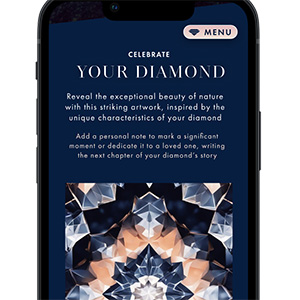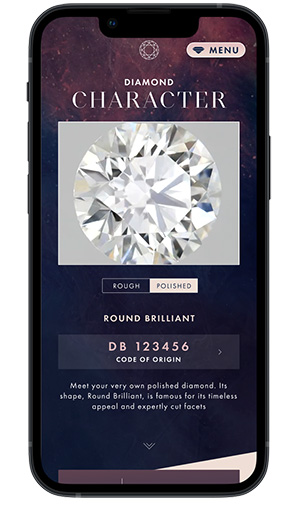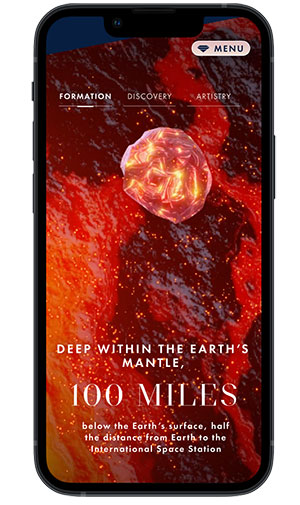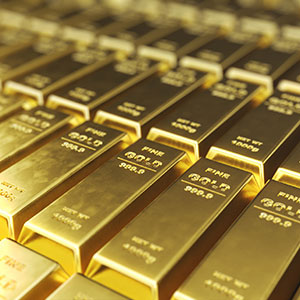
De Beers is testing a plan to sell diamonds with an “origin story” at 65 stores through the United States.
Under the plan, every diamond purchase comes with a QR code that the client can scan to get more information on their diamond. The pilot program just started and will run through the holiday season, at select Ben Bridge, Lugaro Jewellers, Diamonds International, Tara Fine Jewelry, and Bijouterie Italienne stores.
Info available through the QR code aims to “give each diamond a unique personality,” says De Beers chief brand officer and executive vice president David Prager. “It’s not about all diamonds, but about the consumer’s particular diamond.”
To qualify for the program, a diamond must be at least 0.8 cts.; found at a De Beers mine (though, for the moment, De Beers isn’t specifying which mine or country the diamond was found in); tracked on De Beers’ Tracr platform; graded by De Beers’ Institute of Diamonds; and sold through a De Beers sightholder.

Among the things consumers will see when they click the QR link: a peek at their diamond in its rough form; a rarity score (a new feature), which assesses the diamond’s quality characteristics compared with others in De Beers’ annual production; and information on the diamond’s “birthmarks”—De Beers’ new name for inclusions.
“We want to showcase why inclusions are not imperfections but they’re unique stories that give the diamond its character,” says Prager.
De Beers also plans to include a piece of artificial intelligence–generated art, created from the diamond’s internal features. Also provided is a timeline of the world, which points out that diamonds were formed before dinosaurs roamed the Earth. “We want people to look at their fingers and say, ‘My God, that’s a billion years old,’ and stop and think about that,” says Prager.

The company hopes this content will be shared on social media. “In the same way people go on Instagram now and share information about their engagement, we think people will share their story about their diamonds with their close circle of friends, and possibly even the impact their diamond has made,” Prager says.
Whereas De Beers’ Forevermark is limited to diamonds of a certain color and clarity, there are no quality parameters for “origin story” diamonds, as De Beers wants to keep barriers to entry low.
Diamonds in the program are not currently being sold with a premium, but that and other issues will be explored in the test run. “We want to see how consumers respond, how retailers use it, and is it helpful in telling the story,” says Prager. “Does it create a unique personalized story about each individual diamond? Does it help the consumer make a connection and the retailer make a conversion?”
Prager adds that with G7 sanctions on Russian diamonds expected soon, provenance info is becoming “table stakes.”
“You know where your beef comes from, where your eggs come from, where your luxury car was manufactured, where your metals come from,” Prager says. “Our view is understanding the provenance of the diamond can connect the consumer better to the diamond.”
(Photos courtesy of De Beers)
- Subscribe to the JCK News Daily
- Subscribe to the JCK Special Report
- Follow JCK on Instagram: @jckmagazine
- Follow JCK on X: @jckmagazine
- Follow JCK on Facebook: @jckmagazine






